#Crown-of-thorns starfish
Explore tagged Tumblr posts
Text

Crown-of-thorns starfish (Acanthaster planci)
Crown-of-thorns starfish are found on reefs in the Indo-Pacific region.
(Image credit: Georgette Douwma via Getty Images)
#georgette douwma#photographer#getty images#crown-of-thorns starfish#starfish#marine#acanthaster planci#indo-pacific region#reefs#nature
62 notes
·
View notes
Photo

THIS TINY CRAB COULD BE KEY IN THE DEFENSE OF CORAL REEFS
Crown-of-thorns starfish (Acanthaster spp) receives its name from the venomous thorn-like spines that cover its upper surface whose venom provokes strong hemolytic activity. This sea star species is native from Taiwan but is invasive in tropical coral reef ecosystems around the world, and is a pervasive coral predator prone to population outbreaks that have damaged coral reefs across Australia and the wider Indo-Pacific.
Coral rubble is often produced from physical disturbances like fish predation, anchor damage or storms, and is the primary settlement habitat of juvenile crown-of-thorns starfish, when they herbivorous and arent venomous yet. To understand the dinamycs and ecology of the predation of this invasive species in its early stage has been suggested as a primary mechanism that suppresses their outbreaks. Australian researchers assessed the capacity of 104 species of the rubble fauna found across Heron Reef, Great Barrier Reef, Australia. They found only 10 species that regularly consumed juvenile crown-of-thorns in their entirety.

- A juvenile Crown-of-thorns starfish being devored by a red decorator crab during feeding experiments, by K Wolfe.
Most cases of predation resulted in sublethal predation, but not total consumption, making them suvirved, as they could regenerate, but the red decorator crab (Schizophrys aspera), seemed to be VERY hungry, eating almost 5 juvenile crown-of-thorns per day, emphasising the importance of this tiny crab as a key predators at the critical juvenile stage, when it may be controled before outbreak population.
GIF University of Queensland
Reference: Desbiens et al. 2023 Novel rubble-dwelling predators of herbivorous juvenile crown-of-thorns starfish (Acanthaster sp.). Coral Reefs.
#Crown-of-thorns starfish#Schizophrys aspera#red decorator crab#invasive species#great barrier reef#australia#coral reefs#science#sciblr#scienceblr#marine biol
57 notes
·
View notes
Photo
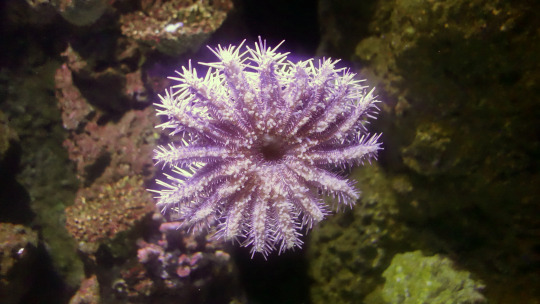
Crown-of-thorns starfish at the Cairns Aquarium in Cairns, QLD, Australia
#seastar#seastars#starfish#starfishes#aquarium#crown-of-thorns#crown-of-thorns starfish#fish#fishblr#fishes
6 notes
·
View notes
Text
The Reef and the Deep
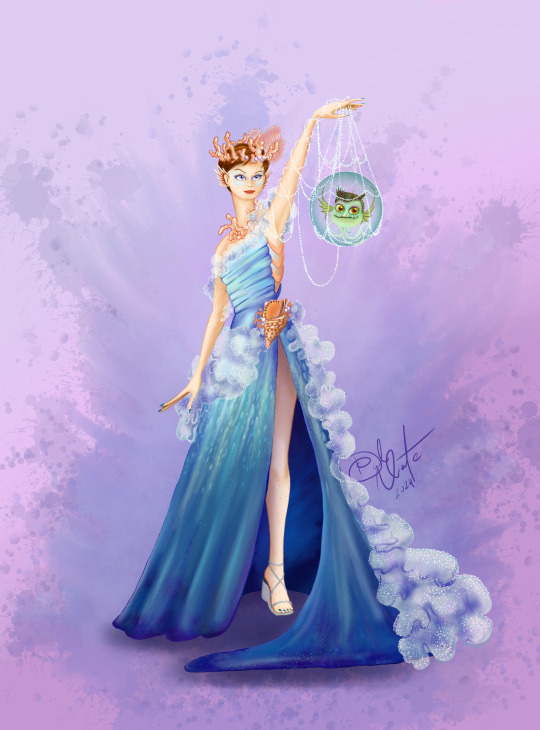
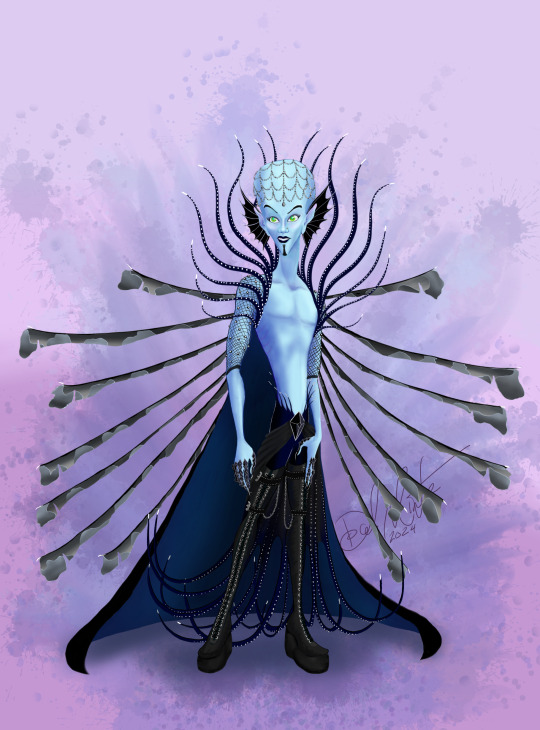
For @buginateacup's fic Haute Water, in which the trio goes to the Met Gala in Minion's designs. These were so much fun! I learned a lot!
Image descriptions: Roxanne and Minion and Megamind in extremely fancy outfits.
Roxanne's dress is cut sharply up the thigh and looks like a wave rolling in - sleeveless, strapless, it has a bustled train of tulle scattered with seed pearls and a waist gather with a seashell and corals. The top of the bodice also has the same seafoam tulle, which wraps around Roxanne's arms. She is wearing a necklace and crown of coral and has iridescent blue highlights on her face. She is holding Minion aloft in a net of pearls. Minion looks extremely pleased with himself and is wearing pink eyeshadow.
Megamind is wearing ink-black and very sharp fins on his ears, a net of black pearls on his head. He has spines of very dark blue rising from his shoulders and arms, and similar spines falling in a narrow overskirt from his waist. He has lionfish-fin spines framing the sides of his cape, which is very dark blue inside and black outside. He has no shirt, but is wearing fishnet sleeves with scattered black pearls, and black armor on the backs of his hands and fingers. His boots are laced all the way up his thighs.
Both are on a pinkish-lavender background with a faded splash effect behind them.
#megamind#megamind fanart#megamind fanfic#please stroke my ego lol these are by far the most ambitious pieces i've ever attempted#updated to add image descriptions#dal is a fanart#dal draws#megamind rules#megamind vs the doom syndicate#the seashell is a Triton's trumpet#Charonia tritonis#they are one of the few predators of the crown of thorns starfish#which is becoming a major problem on the great barrier reef#these snails can reach up to two feet in length and have pretty stripy eyestalks#and a lovely mottled body#met gala
82 notes
·
View notes
Text
You know what Alola has a lot of? Water. And when there’s lots of water you get lots of aquatic Pokémon. Welcome back to the series where I discuss the real-life inspirations of every aquatic, non-fish Pokémon. This time I’m covering gen VII. To see previous entries in this series see gen I part 1, gen I part 2, gen II, gen III, gen IV, gen V, and gen VI. For my previous series where I covered the origins of all fish Pokémon see here. As before, starters and legendary/mythical Pokémon will be covered in a separate series. I’ll also cover ultra beasts separately, so no Nihilego this time.
Starting things off we have Marenie and Toxapex bringing us the first echinoderms since gen I. While Staryu and Starmie were generic starfish, the Marenie line are based specifically on the crown-of-thorns starfish.
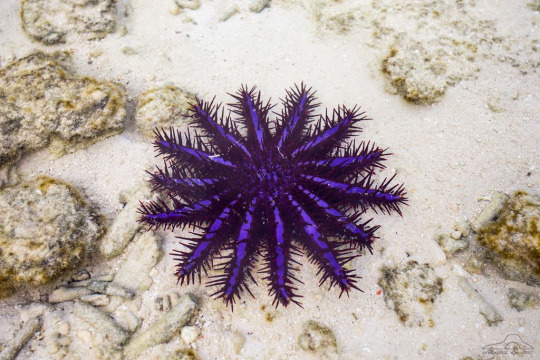
(image: a crown-of-thorns)
These are large starfish covered with venomous spines. The spines are used for defense as they (and the starfish’s other tissues) are filed with a chemicals called saponins. While there is no mechanism for injecting venom, any animal punctured by a spine will get the venom in the wound. It is hemolytic, causing destruction of red blood cells, which can lead to the injured animal suffocating or bleeding out. In addition, the spines are brittle and can break off and get stuck in a wound. In humans, the venom can cause sharp, stinging pains, persistent bleeding, and swelling and nausea for up to a week after the sting. The persistent nature of the pain and hemolysis may be the basis for the line’s signature ability “Merciless”. The other big feature of the crown-of-thorns is its diet. They feed on coral polyps by everting their stomachs onto coral and digesting them externally. This is why the line are specifically stated to prey on Corsola. Too many crown-of-thorns in one coral reef can badly damage it, hence why Toxapex is said to leave a trail of Corsola horns in its wake. Toxapex also takes influence from the hā’uke’uke or helmet urchin, a species found in Hawaii that is shaped very similar to Toxapex’s tentacles when they are all down.

(image: a hā’uke’uke)
Dewpider and Araquanid are based on diving-bell spiders. These spiders spend almost their entire lives underwater, the only species to do so. They do still need to breathe air and so used a coating of water-repelling hairs to carry a bubble of oxygen with them when they are underwater, surfacing occasionally to refresh their supply. The Dewpider line are the inverse of that: a species that can only breathe water and need to bring a bubble of water with them while they live on land. Because of this, they may also be based on sea spiders, a group of marine arthropods that look very similar to spiders. This origin is more noticeable with Araquanid, which has the skinny body and long legs of sea spiders. In both species, the bubble over the head is based on a diving helmet.
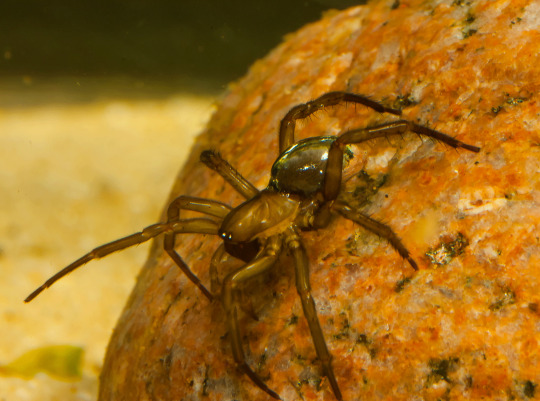
(image: a diving bell spider with its air bubble visible)
Wimpod is one of my favorite gen VII mons and its origin is complex. It is based on a variety of aquatic arthropods. Most notably it resembles an isopod while having a head similar to a trilobite.
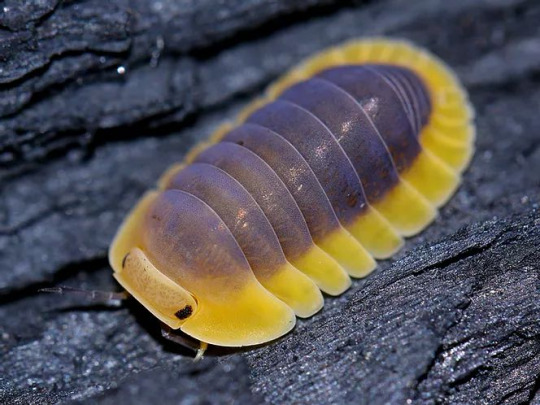
(image: a terrestrial isopod)
It also looks like a copepod, which are zooplankton that have prominent antennae. Fun fact: Plankton from Spongebob is a copepod.
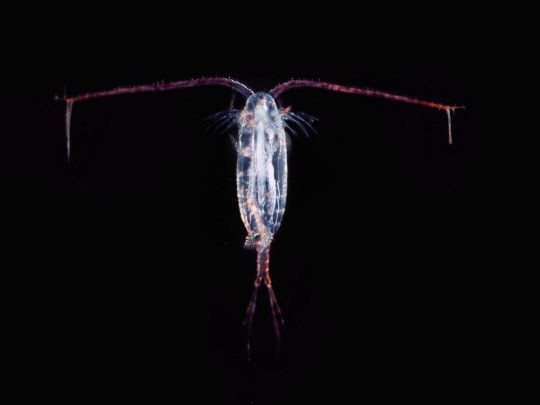
(image: a copepod)
Wimpod’s behavior of fleeing at the first sign of danger is very similar to silverfish. These are insects with a similar body shape to Wimpod that are famous to coming out in the dark and fleeing once the lights come on.

(image: a silverfish)
Wimpod’s habit of eating almost anything and leading a clean path as it travels makes it effectively a living Roomba. As Golisopod, it is based on the giant isopod, a group of species that are much larger than the average isopod thanks to deep-sea gigantism. This is a phenomenon where animals living in the deep ocean become larger than their shallow-water relatives and has a number of proposed causes. The largest and most famous of the giant isopods reaches a maximum recorded length of 50 cm (19.65 in), which is still quite a bit shorter than Golisopod’s 2 m (6’7”). It is also based on samurai as its shell resembles samurai armor and some of its behavior (such as meditation) comes from samurai stories. Its ability to cleave the air in twain with its claws likely comes from classic exaggerations of a warrior’s ability. Golisopod doesn’t care much for a samurai’s code of honor though, as it will happily fight dirty and run from fights.
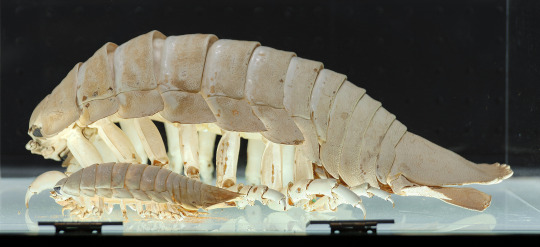
(image: preserved specimens of two giant isopod species)
Gen VII was a good one for echinoderms as coming off the hells of the starfish Marenie line we get a sea cucumber in Pyukumuku. Sea cucumbers have a pretty simple body plan, basically looking like tubes. Their most famous ability is a defense strategy some species employ where they can eject part of their guts to deter predators. In real sea cucumbers, the ejected guts will regenerate while in Pyukumuku, they can retract back into the body and even act like a hand. Sea cucumbers also have external gonads that look like strings. The fluffy tail Pyukumuku has is actually its genitals. The spikes on top might be based on sea urchins, which are relatives of sea cucumbers.
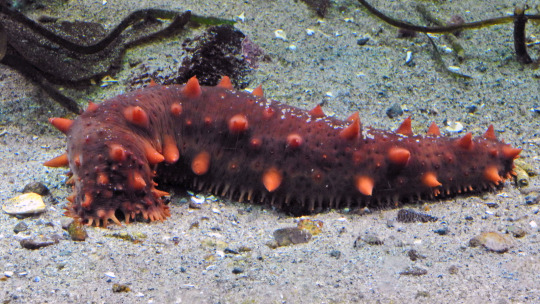
(image: a sea cucumber with similar spines to Pyukumuku)
Our final Pokemon for today is Dhelmise and it’s a weird one. An anchor and ship’s wheel bound together and possessed by the ghost of seaweed. What confuses me is that it’s a wooden anchor. It turns out wooden anchors were used at one point in early boats, but were phased out in favor of ones made of iron. Dhelmise being haunted parts of ships is reminiscent of tales of ghost ships, though on a smaller scale. The seaweed on it may be dead man’s fingers, which grows small tendrils and the name is obviously fitting for a ghost-type.
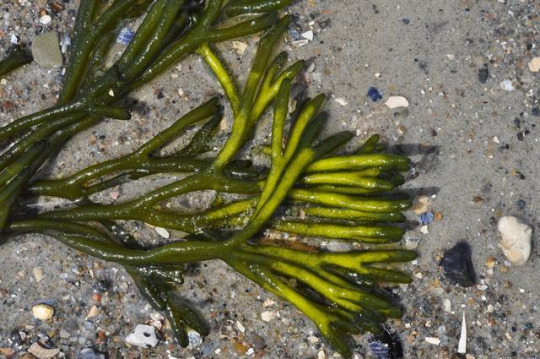
(image: dead man's fingers)
The shiny version having red seaweed could reference red tide, a type of algal bloom that can turn parts of the ocean red. Dhelmise hunts Wailord, meaning it may have been a part of a whaling ship and now the ghosts within it are carrying out their last tasks endlessly, a common trope in ghost stories. It may also reference Moby Dick’s Captain Ahab and his obsessive quest to kill the white whale.
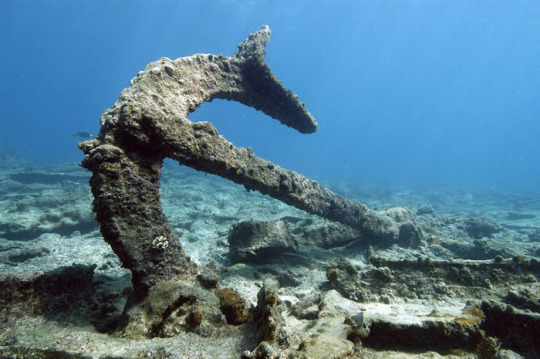
(image: a sunken anchor from a shipwreck in Hawaii's Papahānaumokuākea National Monument)
That’s all for now. Return next time when we go to Galar.
#pokemon#pokemon biology#pokemon lore#pokemon origins#marine biology#aquatic biology#animal facts#zoology#marenie#toxapex#dewpider#araquanid#wimpod#golisopod#pyukumuku#dhelmise#starfish#crown of thorns#diving bell spider#isopods#trilobite#copepods#giant isopod#sea cucumber#echinoderm#anchor#silverfish
212 notes
·
View notes
Note
Will refusing to go see Elizabeth because he thinks she could never love A fish mutant, Not realizing she has a monster fucker permit.
this ask made try and make a monster-y version of Will lol

sorry if it's hard to read, here's what they're saying: Will: I'd look hideous as a sea monster... I don't want Elizabeth to look at me like that ever... Elizabeth: Hot.
#Pirates of the Caribbean#Will Turner#Elizabeth Swann#willabeth#i'm no character designer but i had fun !! :]#davy jones is both cool and goofy looking so i tried doing the same to will#and well. a swordfish was too on the [nose] so i put it on his [arm]#HAH#sailfish? anyways#the thing on his head is a crown of thorns starfish#google it they're cool !!#the things on his hair are seaweeds#i just realized i forgot his necklace nooo
38 notes
·
View notes
Text

Comb Reef - Manoa Lai Main
Endless Ocean, Nintendo Wii
why is it called knives reef in the european release. it looks exactly like a comb, comb reef makes infinitely more sense
#endless ocean#endlessocean#endless ocean 1#endlessoceanphotos#nintendo wii#wii#manoa lai#crown of thorns starfish#bower's parrotfish
12 notes
·
View notes
Text

Elijah Volkov after he was thrown off the pyre
#chnt#elijah volkov#starfish#sorry I've been on a starfish kick and.#See. this image is funny also because i kin assigned Elijah the Crown of Thorns Starfish. smiles!#Anyways.
12 notes
·
View notes
Text
What's Attina wearing?

I've already discussed what I suspect is the reasoning behind Attina's design. To summarize, her crown resembles that of the Statue of Liberty, and the Colossus of Rhodes--the latter of which is Helos, the Greek God of the Sun, explaining her red and orange color scheme.
But what exactly is that spiky tiara made out of?

There are a few possibilities.
The spikes could be very smooth turritella shells. Or, the entire tiara might be cut from a single huge shell with exceptionally long spikes (a spider conch perhaps). The longer versions of her crown also resemble the spikes of a Crown of Thorns starfish.




Since Attina has more than one tiara, it could be "D, All of the above."
Harder to identify is the lifeform that she employs as a hat during the opening concert.


It seems to be some kind of ray. If so, it's either de-stingered, or Ariel isn't the only sister who likes to live dangerously.

There is of course, also the possibility that it's just a giant ocean mushroom, or something.
#what's she wearing#attina#crown#tiara#headdress#seashell#turritella shells#spider conch#spiky seashell#spikes#crown of thorns starfish#starfish#sting ray#ray#sea creatures#ocean life#disney#the little mermaid#the little mermaid 1989#daughters of triton#red#orange#crown princess#ariel's sisters#ocean mushroom#giant seashell
7 notes
·
View notes
Text
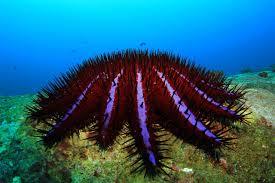
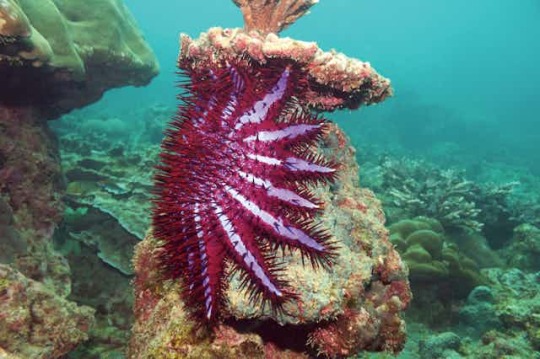
#invasive species#my polls#tumblr polls#polls#animal polls#poll blog#animals#invertiblr#invertebrates#asteroidea#starfish#crown of thorns starfish
10 notes
·
View notes
Text
To understand me it is crucial to know that in another life I could have been a theater kid. But in this life I was a science olympiad kid.
#Could’ve been = I have many online friends who were and/or are like actively going into theatre as a career <3 and also friends of my irl hs#friends were theatre kids. And also due to revvy girl utena i have an interest in theatre as a medium now<3#esha.txt#This post was spurred by seeing a parrotfish on the dash . I did water quality in scioly and now I can identify parrotfish and flamingo#tongue snails and crown of thorns starfish and groupers on sight now but like only those specific animals
29 notes
·
View notes
Text
Fishtober Day 26 - Crown of Thorns Starfish
Check out the creator! ^ [@/fishiscrazy]


The favourite meal of the Harlequin Shrimp, saying that the Crown of Thorns Starfish isn't cool would be a total lie. Though I just really like the ocean so maybe it is. They can grow up to 21 legs and are often 35cm [14in] wide! What isn't interesting about that?
Their name comes from their venomous, thorn-like spines. They're one of the largest starfish species, and they're distributed throughout the Indo-Pacific. Their diet and region heavily affects their appearance - their skin is commonly brown, gray, green or purple and their spines red, yellow, blue or brown!

I saw your request to the person who made one! It's about halfway done, but I post just before I go to bed. Thanks for your patience!
#agere#sfw agere#age regression#sfw age regression#agere blog#boy regressor#boyre#agedre#sfw agedre#fish#starfish#crown of thorns
3 notes
·
View notes
Text
Oo, I get to talk about an absolute CLASSIC marine ecology story!
This is not a story about AI being trained to pick plastic out of the ocean, but picking out something else that's harmful to the ocean: The Crown of Thorns Starfish. (Also yes, that name DOES go incredibly hard.)
The COTS is a species of venomous starfish found on the barrier reef, and they feed on corals. They aren't invasive, but they don't have many natural predators either, so large outbreaks in their population can descercate huge portions of the reef at a time. That's where this guy comes in:

This is Rangerbot. It's a "cots bot" equipped with trained AI to recognize inditidual COTS. It then injects the COTS with bile, which is toxic to the COTS but harmless for the environment. This was effectively used to keep the COTS population in check, so the coral of the barrier reef had time to grow.

There's an episode of Bizarre Beasts about the COTS (hosted by Hank Green himself) which I think is pretty cool and explains the whole situation in a fun way.
So, yeah! If an AI can be trained to recognize a species of starfish with %99 accuracy and effectively get rid of them, I think it is PERFECTLY reasonable to train AI to recognize trash in the oceans, at least in areas close to the shore, and have them clean it up.
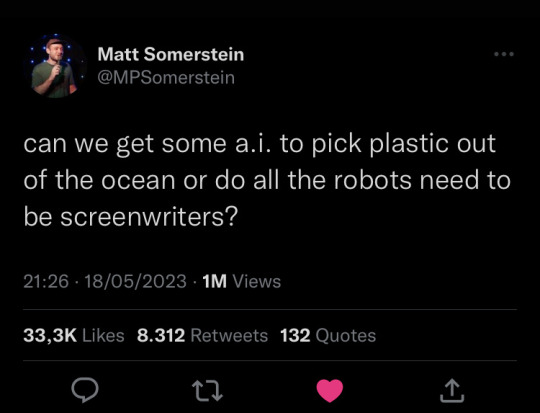
#I love rangerbot... its my friend#marine biology#marine ecology#cotsbot#crown of thorns starfish#fun facts#AI#artificial intelligence#great barrier reef
117K notes
·
View notes
Text




We had our snorkel equipment from Palau so we decided to snorkel in Tumon Bay near our hotel. It should be called Turtle Bay - they were everywhere - swimming around and laying on the bottom and hiding under rocks and coral. There were some nice patches of coral but not much.
1 note
·
View note
Text
Updating some old gross refrence material. Starting with a real star(fish), Amaya!
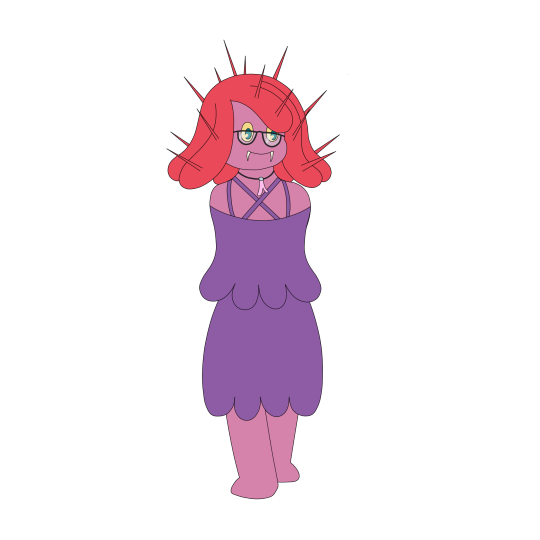
1 note
·
View note
Text

Marine Encyclopedia - The Gabbiano
Endless Ocean, Nintendo Wii
did you know...? this is the only place in the game where you can see the spiny lobster's walking animation!
the model and animation for it were taken from the everblue series, where they did walk around... but in endless ocean, they made them stationary. for some reason
#endless ocean#endless ocean 1#endlessocean#endlessoceanphotos#nintendo wii#wii#gabbiano#remora#horseshoe crab#bigfin reef squid#broadclub cuttlefish#ornate spiny lobster#crown of thorns starfish#common octopus
15 notes
·
View notes